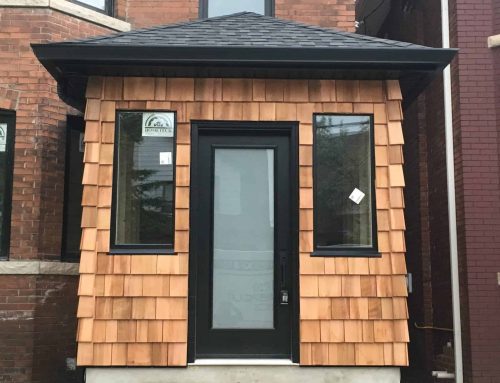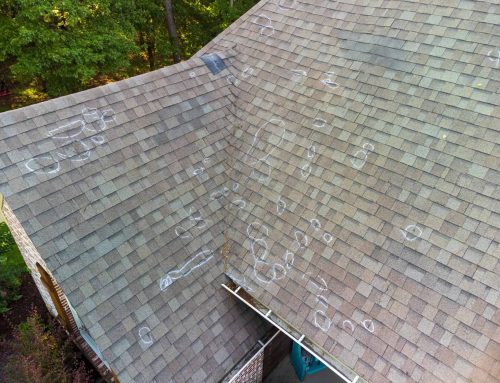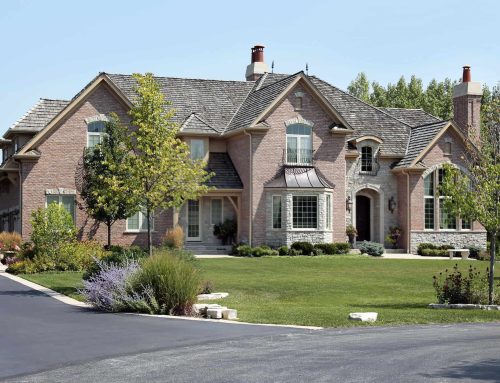A small roof leak today can become a catastrophic mold infestation and structural damage problem tomorrow, yet many homeowners underestimate how quickly minor roofing issues can escalate into serious health hazards and costly repairs. What begins as a few missing shingles or a clogged eavestrough can rapidly evolve into extensive water damage, toxic mold growth, and compromised structural integrity that affects your entire home’s safety and value.
Toronto’s challenging climate creates the perfect storm for roofing problems to develop and worsen quickly. The city’s harsh winters with freeze-thaw cycles, heavy spring rainfall, and humid summers provide ideal conditions for water infiltration and subsequent mold growth. Combined with the GTA’s older housing stock, where many homes were built before current building standards, roofing vulnerabilities can quickly transform from minor maintenance issues into major health and safety concerns that require immediate professional intervention.
Common Roofing Problems That Create Water Infiltration Pathways
Understanding the most frequent roofing failures helps homeowners identify potential problems before they escalate into serious water damage and mold growth situations. Toronto’s climate conditions make certain roofing problems particularly problematic and fast-developing.
Shingle Deterioration and Failure
Asphalt shingle problems represent the most common source of roof leaks in Toronto homes. Cracked, curled, or missing shingles create direct pathways for water infiltration, especially during the city’s intense rainfall events and rapid snowmelt periods.
Wind damage from Toronto’s frequent storms can lift and tear shingles, creating immediate vulnerabilities that allow water penetration. Even minor wind damage can compromise shingle integrity and lead to progressive failure during subsequent weather events.
Granule loss from aging shingles reduces their weather protection capabilities and often indicates that replacement is necessary. Toronto’s UV exposure during summer months and freeze-thaw cycles during winter accelerate granule loss and shingle deterioration.
Thermal expansion and contraction from Toronto’s extreme temperature variations cause shingles to crack and separate, creating gaps where water can penetrate the roof structure and enter attic spaces.
Flashing Failures Around Roof Penetrations
Damaged or improperly installed flashing around chimneys, vents, and skylights creates prime locations for water infiltration. These areas are particularly vulnerable during Toronto’s winter ice dam conditions and spring rainfall events.
Corroded flashing materials, especially in older Toronto homes with galvanized steel components, develop holes and gaps that allow water penetration. The city’s road salt and urban pollution can accelerate flashing corrosion and failure.
Separated or loose flashing allows water to flow behind protective barriers and directly into roof structures. Toronto’s freeze-thaw cycles can cause flashing to shift and separate from roof surfaces, creating immediate leak risks.
Inadequate flashing installation during original construction or repairs often becomes apparent during Toronto’s first major storm events, when design deficiencies are revealed through water infiltration problems.
Eavestrough and Drainage System Failures
Clogged eavestroughs force water to overflow and potentially infiltrate roof structures near the fascia and soffit areas. Toronto’s abundant urban tree cover makes eavestrough maintenance particularly critical for preventing water backup problems.
Damaged or separated eavestrough joints allow water to leak directly onto roof edges and fascia boards, creating moisture conditions that promote wood rot and mold growth in these vulnerable areas.
Ice dam formation during Toronto winters can force water backup under shingles and into roof structures when eavestroughs become blocked with ice. This creates extensive water infiltration that may not become apparent until spring thaw reveals the damage.
Inadequate eavestrough capacity during Toronto’s intense rainfall events can cause overflow that saturates roof edge components and creates conditions for water infiltration and subsequent mold growth.
The Rapid Progression from Leaks to Mold Contamination
Once water infiltration begins, the progression to serious mold problems can occur remarkably quickly, particularly in Toronto’s climate conditions that provide ideal environments for mold growth and proliferation.
Optimal Conditions for Mold Development
Mold requires only three basic conditions to establish and spread rapidly: moisture, organic food sources, and temperatures between 40-100°F. Roof leaks provide the moisture, while attic materials like wood framing, insulation, and drywall provide abundant food sources.
Toronto’s year-round temperatures fall within the ideal range for mold growth, meaning that once moisture problems begin, mold development can occur quickly regardless of the season. Heated homes during winter and warm, humid conditions during summer both support rapid mold colonization.
Poor attic ventilation, common in many older Toronto homes, creates stagnant air conditions that accelerate mold growth once moisture is introduced through roof leaks. Without proper air circulation, moisture levels remain elevated and provide sustained conditions for mold proliferation.
Hidden moisture accumulation behind walls and in insulation materials creates ideal environments for mold growth that can continue undetected for extended periods, allowing extensive contamination to develop before problems become visible.
Timeline of Mold Development
Mold spores can begin germinating within 24-48 hours of water exposure under favorable conditions. This means that even small roof leaks can trigger mold growth almost immediately if conditions are right.
Visible mold growth typically appears within 3-7 days of initial water exposure, though extensive colonization may be occurring in hidden areas before surface growth becomes apparent to homeowners.
Established mold colonies can spread rapidly throughout connected spaces, moving through ventilation systems and structural cavities to contaminate areas far from the original water source.
Mycotoxin production by certain mold species can begin within days of colonization, creating toxic conditions that pose serious health risks even before mold growth becomes visible or odorous.
Factors That Accelerate Mold Growth
Organic building materials common in Toronto homes, including wood framing, cellulose insulation, and paper-faced drywall, provide ideal food sources that support rapid mold colonization and spread.
Poor insulation and air sealing in older Toronto homes create temperature and humidity fluctuations that can accelerate mold growth by creating condensation cycles that provide additional moisture sources.
HVAC system operation can spread mold spores throughout the home once contamination begins, creating whole-house air quality problems that extend far beyond the original leak location.
Delayed detection of roof leaks allows mold problems to become extensively established before intervention occurs, making remediation more complex and costly than early intervention would require.
Health Hazards and Structural Damage from Untreated Problems
Ignoring roofing problems that lead to water infiltration and mold growth creates serious risks to both your family’s health and your home’s structural integrity that worsen progressively over time.
Immediate Health Risks from Mold Exposure
Respiratory problems including asthma attacks, allergic reactions, and breathing difficulties can develop quickly in individuals exposed to mold contamination from roof leaks. Children, elderly family members, and individuals with compromised immune systems are particularly vulnerable.
Skin and eye irritation from mold exposure can cause persistent discomfort and may indicate more serious underlying contamination that requires professional assessment and remediation.
Headaches, fatigue, and cognitive difficulties have been linked to mold exposure and can significantly impact quality of life for affected family members. These symptoms may be mistakenly attributed to other causes while mold contamination continues unaddressed.
Acute allergic reactions to specific mold species can cause severe symptoms requiring immediate medical attention. Some individuals may develop new allergies or sensitivities due to mold exposure from roof leak situations.
Long-term Health Consequences
Chronic respiratory conditions can develop from prolonged mold exposure, potentially leading to permanent lung damage and ongoing health problems that require long-term medical treatment.
Immune system suppression from extended mold exposure can increase susceptibility to other illnesses and infections, creating cascading health problems that extend beyond the direct effects of mold contamination.
Neurological effects from mycotoxin exposure have been documented in cases of severe mold contamination, potentially causing memory problems, concentration difficulties, and other cognitive impairments.
Secondary infections can develop when respiratory systems are compromised by mold exposure, particularly in vulnerable individuals who may require hospitalization and intensive treatment.
Progressive Structural Damage
Wood rot from sustained moisture exposure can compromise structural integrity of roof framing, requiring extensive reconstruction that far exceeds the cost of early leak repair and prevention.
Insulation damage from water infiltration reduces energy efficiency and creates additional moisture retention problems that accelerate mold growth and structural deterioration.
Drywall and ceiling damage often requires complete replacement in affected areas, involving significant reconstruction costs and temporary displacement during remediation work.
Foundation problems can develop when roof leaks allow water to penetrate wall systems and reach foundation areas, creating additional structural concerns that compound repair costs.
Warning Signs Every Toronto Homeowner Should Monitor
Early detection of roofing problems allows for prompt intervention before serious water damage and mold growth occur, making regular monitoring and professional inspection essential for home protection.
Visible Exterior Warning Signs
Missing, damaged, or curled shingles are obvious indicators of roofing problems that require immediate attention. Toronto’s storm seasons can cause sudden shingle damage that creates immediate leak risks.
Granule accumulation in eavestroughs indicates advanced shingle deterioration that suggests replacement may be necessary. Excessive granule loss accelerates during Toronto’s harsh weather conditions and indicates compromised weather protection.
Sagging or damaged eavestrough sections suggest structural problems that can lead to water overflow and infiltration issues. Ice damage during Toronto winters commonly causes eavestrough problems that worsen throughout the season.
Flashing damage or separation around roof penetrations creates immediate leak risks that can lead to rapid water infiltration during the next precipitation event.
Interior Warning Signs of Water Infiltration
Water stains on ceilings or walls indicate active or recent water infiltration that requires immediate investigation and repair. Even small stains can indicate significant hidden water damage and mold growth.
Musty odors, particularly in attic areas or upper floors, often indicate mold growth from roof leaks before visible contamination appears. These odors should trigger immediate professional assessment.
Peeling paint or wallpaper can indicate moisture problems from roof leaks that are affecting interior surfaces. This damage often appears in areas adjacent to leak sources before the leaks themselves become obvious.
Increased humidity levels or condensation problems may indicate ventilation issues caused by roof leaks that are compromising attic air circulation and creating mold-friendly conditions.
Seasonal Monitoring Considerations
Spring inspections after Toronto’s harsh winters can reveal damage that developed during freeze-thaw cycles and ice dam events. Early spring assessment allows for repairs before the heavy rainfall season begins.
Fall preparation inspections help identify vulnerabilities before winter weather arrives, allowing for preventive repairs that avoid winter emergency situations when repair options are limited.
Post-storm assessments after major weather events can identify new damage before it leads to water infiltration problems. Toronto’s frequent storms make regular post-event inspection particularly important.
Professional annual inspections provide comprehensive assessment that identifies subtle problems before they become serious. Expert evaluation can detect issues that homeowners might miss during routine monitoring.
Professional Assessment and Remediation Strategies
Addressing roofing problems that have led to water damage and mold contamination requires professional expertise to ensure complete remediation and prevention of recurring problems.
Comprehensive Damage Assessment
Professional water damage assessment identifies the full extent of infiltration and contamination, including hidden damage that may not be apparent through visual inspection alone. Thermal imaging and moisture detection equipment can reveal problems in wall cavities and other concealed areas.
Mold testing and air quality assessment determine the types and concentrations of mold contamination present, providing essential information for developing appropriate remediation strategies that protect family health.
Structural integrity evaluation assesses whether water damage has compromised building components that require repair or replacement. Professional assessment can identify safety concerns that need immediate attention.
System evaluation examines roofing, drainage, and ventilation systems to identify the root causes of water infiltration and develop comprehensive solutions that prevent recurring problems.
Professional Remediation Approaches
Safe mold remediation requires specialized equipment, containment procedures, and disposal methods that prevent cross-contamination during cleanup. Professional contractors have the training and equipment necessary to perform safe, effective remediation.
Water damage restoration involves thorough drying, dehumidification, and sanitization of affected areas to prevent recurring mold growth. Professional restoration ensures that moisture levels are reduced to safe levels throughout affected areas.
Roofing repair and replacement must address both immediate leak sources and underlying vulnerabilities that contributed to the problems. Professional roofing contractors can provide comprehensive solutions that prevent future water infiltration.
Ventilation system improvement may be necessary to prevent future mold problems by ensuring adequate air circulation and moisture control in attic and other vulnerable areas.
Prevention and Long-term Protection
Regular maintenance programs help prevent minor issues from developing into major problems through scheduled inspections and preventive repairs. Professional maintenance contracts provide ongoing protection that identifies problems early.
System upgrades may be necessary in older Toronto homes to bring roofing and drainage systems up to current standards that provide better protection against the city’s challenging climate conditions.
Monitoring and early detection systems can alert homeowners to developing problems before they cause serious damage. Professional contractors can recommend appropriate monitoring strategies based on individual home vulnerabilities.
Emergency response plans ensure that problems are addressed quickly when they do occur, minimizing damage and reducing remediation costs through prompt professional intervention.
Protecting Your Home with Expert Roofing Solutions
Roofing problems that lead to water damage and mold contamination represent serious threats to both your family’s health and your property’s value. Understanding these risks and taking proactive steps to address vulnerabilities before problems develop is essential for protecting your investment and ensuring a safe living environment.
The key to effective protection lies in regular professional inspection, prompt repair of identified problems, and comprehensive remediation when water damage occurs. Toronto’s challenging climate makes professional expertise particularly valuable for identifying subtle problems and implementing solutions that provide long-term protection.
Attempting to address serious water damage and mold problems without professional assistance often leads to incomplete remediation that allows problems to recur and worsen over time. Professional contractors have the expertise, equipment, and experience necessary to provide effective solutions that protect your home and family.
Concerned about roofing problems or water damage in your home? Contact ODS for comprehensive assessment and professional solutions that protect your property and family from the serious consequences of untreated roofing issues. Let us help you maintain a safe, healthy home environment with expert roofing and water damage prevention services.








